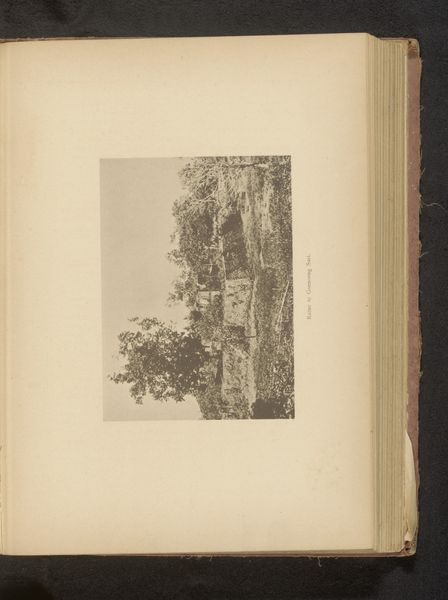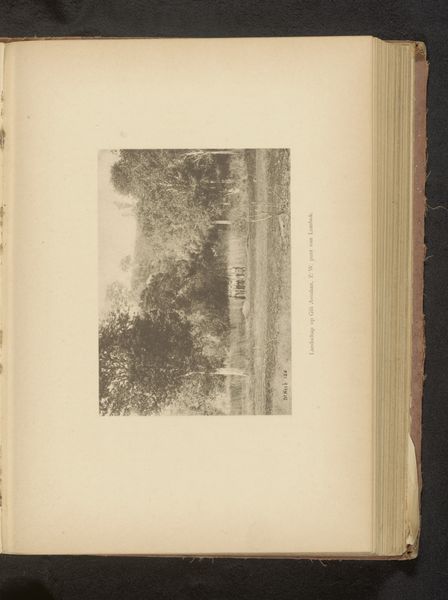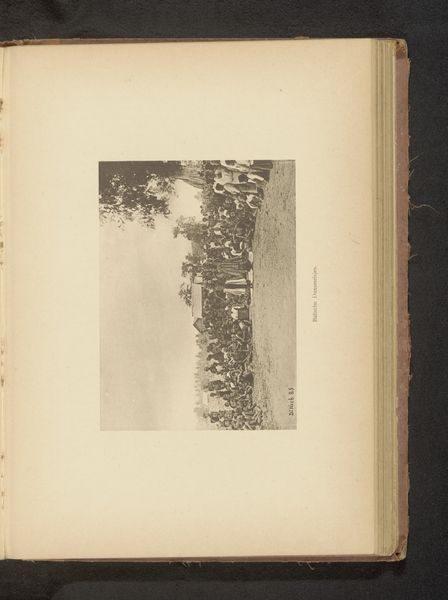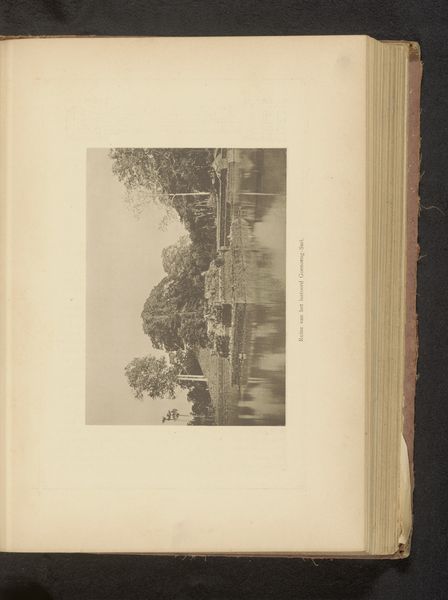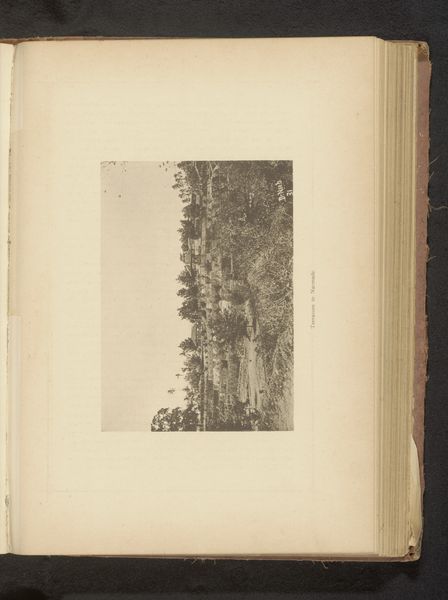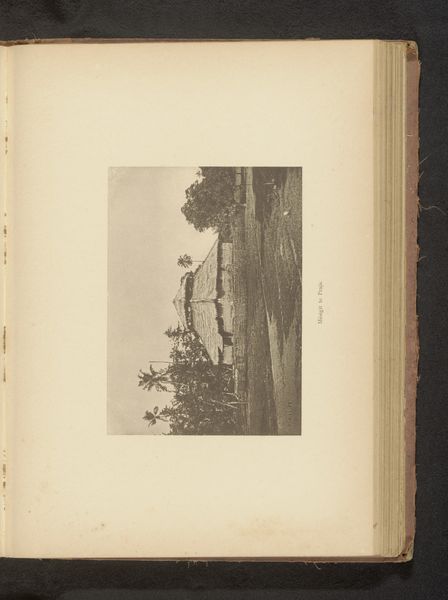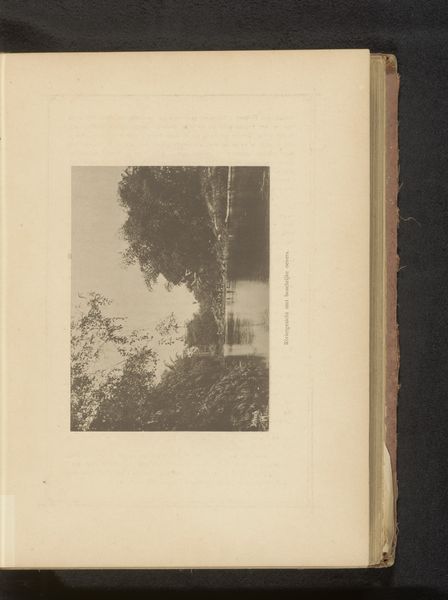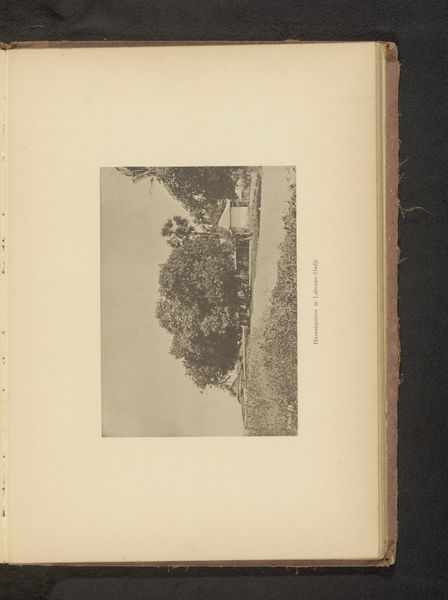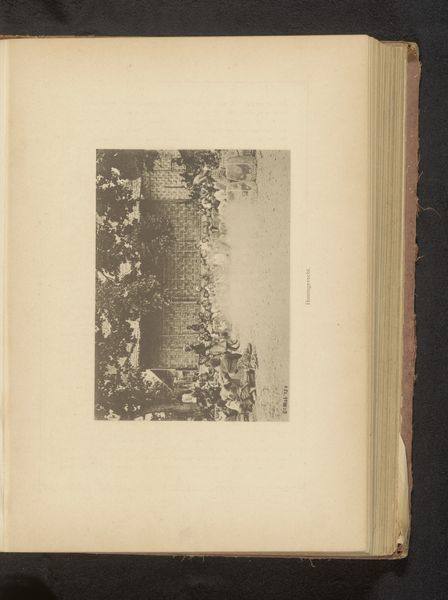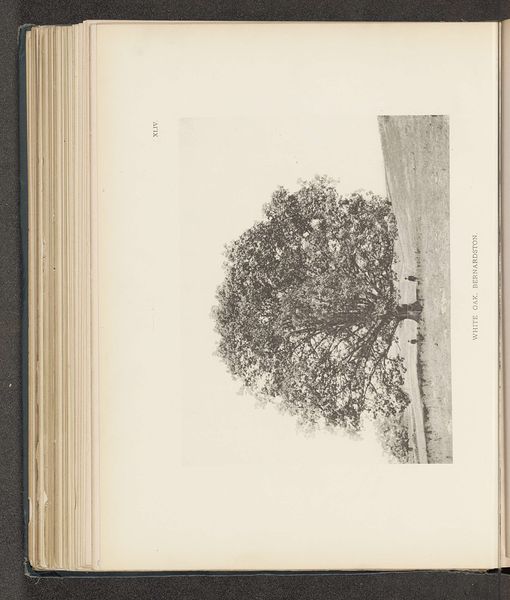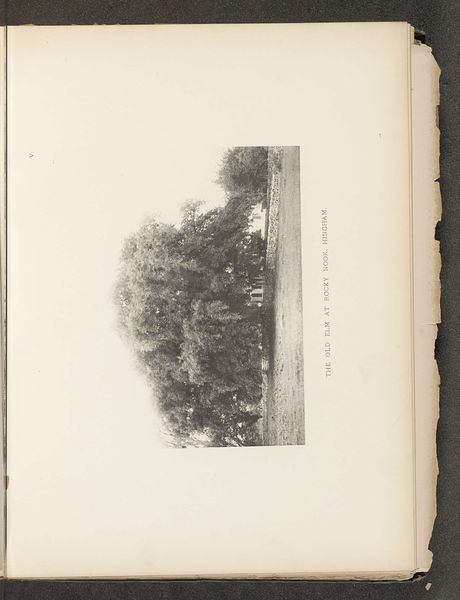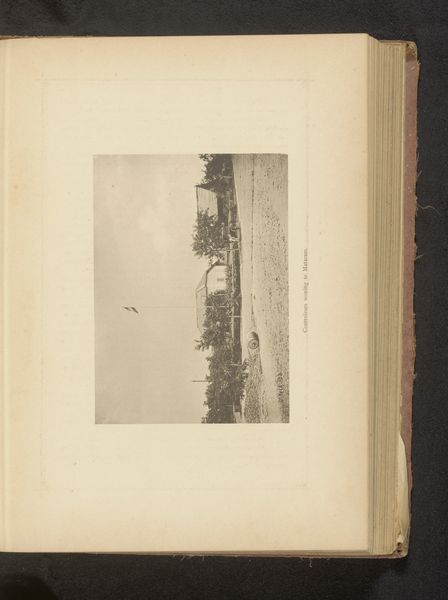
photography, albumen-print
#
dutch-golden-age
#
landscape
#
photography
#
orientalism
#
albumen-print
Dimensions: height 121 mm, width 167 mm
Copyright: Rijks Museum: Open Domain
Curator: Looking at this albumen print entitled "Gezicht op de Dewa tempel," created before 1897 by Christiaan Johan Neeb, I am struck by the immense, shadowy tree dominating the structure and almost consuming the light. What do you observe? Editor: It's definitely an image steeped in colonialism, a representation framed through a Western lens, appropriating the Dewa temple, whatever cultural weight and history is contained there. It feels incredibly distanced from its subject, almost like an inventory shot. Curator: As a photograph, it does hold a somewhat anthropological quality. The temple becomes an artifact displayed for external observation, with emphasis on its objective existence. We cannot know the beliefs or stories that animate that site. It makes me ponder how cultural artifacts lose aspects of their intangible qualities with shifts in location or audience. Editor: Exactly! The symbolism is disrupted. Instead of conveying any inherent spiritual meaning of the Dewa temple, this image reduces it to a static object, showcasing the photographer's ability to capture a so-called "exotic" scene. What do you think that monumental tree evokes for the viewer, given its dominance? Curator: The tree’s shadow may represent a kind of… obfuscation. We observe something grand and permanent about nature eclipsing or obscuring our ability to directly see this sacred structure, creating an ambiguity. It may further echo that the intangible significance is what we most often lose or overwrite when moving or recategorizing symbols cross-culturally. Editor: It definitely obscures understanding and perpetuates this idea of an exoticized East. What about the way it presents labor? Is the human presence almost staged here, secondary? Curator: The human figures feel dwarfed and still, accentuating that sensation of timelessness within a broader picture of this colonial landscape. But beyond what the photograph reveals about this location, it prompts deep questions about how we treat historical symbols. Editor: Precisely. The albumen print becomes more than a photograph; it serves as a document reflecting the social and power dynamics of its time. Understanding this helps dismantle its assumed neutrality. Curator: Indeed. Through the symbolic readings, historicizing and contextualizing the Dewa Temple portrait enriches not just our comprehension of visual legacies but reveals how visual traditions can transcend initial impressions when informed by new understandings. Editor: By questioning that seemingly transparent representation, we begin to peel back layers of cultural imposition. Hopefully our critical perspective contributes toward better awareness and more conscientious engagement with art history and colonial visual tropes.
Comments
No comments
Be the first to comment and join the conversation on the ultimate creative platform.
